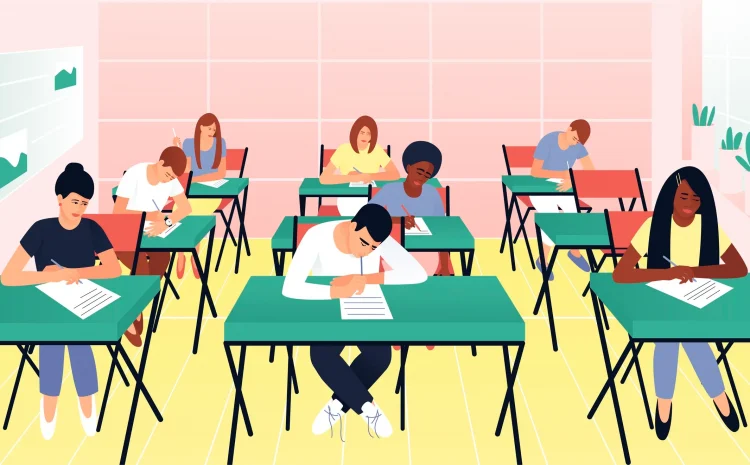Unity’s Promise to Reduce Class Size Is an Impossible Lie

Study after study proves that small class sizes have the greatest positive impact on a child’s learning. Anyone who has ever spent any time at the front of a classroom will agree with these studies. Such universal agreement on anything related to education is so very rare to find. Considering the popularity of this idea, it makes sense that our union, currently led by Michael Mulgrew and the Unity caucus, would promise to make such a dream come true. As an educator since the late 1980’s, a former Chapter Leader, a fierce union advocate, and a current candidate on the United for Change coalition slate, I can prove to you why this is not only an empty campaign promise but also an outright lie. I hope and pray that I am proven wrong at the start of next school year, no matter whether United for Change or Unity wins the election, but my heart is telling me that what I will go on to state is going to be our cold, hard reality.
In my time as a teacher, I have watched class sizes grow across all grade levels. Little loopholes were created as student populations around the city grew, allowing more students to be shoved into overcrowded classrooms. Worst of all was when class size limits were lifted for gifted and talented programs. Billed as a way of granting more students access to an accelerated curriculum, administration saw it another way. Any new admit to their school after the first week of school was determined to be “gifted” and placed in these classes. This way administrators did not have to worry about being in violation of the contract with oversized classes. This loophole worked well for administration until the Bosnian War in the early 1990’s. Like many others, my school was flooded with refugees, and my gifted and talented class went from 22 to 34 students! Exceptional circumstances? Yes, but with the Russian invasion of Ukraine taking place right now, this is certainly a scenario that could be paralleled in the very near future.
Nevertheless I learned something from this experience and so did administration. Administrators called this an “exceptional situation” and said that there was nothing that they could do about it after the window to grieve class sizes closed within 48 hours of members receiving their programs. As a Chapter Leader many years later, I learned how this “emergency” situation loophole was continually exploited by administration. In the beginning of my first year as a Chapter Leader, I immediately surveyed my staff and found out that there were more than a dozen classes that were oversized. I filed the grievances and when the principal said that nothing could be done, the grievance went to Step Two. Ah-ha! I felt certain that I was going to win my first grievance. I soon found out how very wrong I was.
This practice of allowing the contract to be violated due to “accepted practice” within a given school has become the City’s go-to defense for dismissing virtually every grievance that comes before an arbitrator.

When I went to the hearing, the first question I was asked was if the school had oversized classes during the previous year. I said, “YES! They were last year too!” They next asked why no grievance was filed at that time. I was not the Chapter Leader at that time, so I could not answer why no one had filed a grievance. As a result, the grievance was denied. Why? This is where the UFT has lost so much power in these grievance hearings. The argument from the City of New York, the DOE and the CSA (administration union) was that if there was no prior grievance, then having oversized classes was an accepted practice that could continue. I immediately blurted out, “That is not fair!” and I was told how to correct the situation. The fix? I was told that a grievance would need to be filed for three years in a row. If administration continued to program oversized classes for 3 subsequent years, then the arbitrators would rule that the administration was intentionally creating overly large class sizes and would mandate for them to remedy the situation. The following year, class sizes were again over limits so I filed a grievance for the second year in a row. Again I was told that if administration over-programmed classes the following year and I filed a grievance, that the arbitrators would force administration to follow the contract by ensuring that teachers had smaller classes within the negotiated class size limits. When the third year of my tenure as a chapter leader came, suddenly administration decided to create classes of “legal” sizes, so I did not have to file a grievance. Great news, right? Unfortunately not as the following year, administration again programmed teachers with oversized classes since the grievance “clock” had now been reset. Administration once again had carte blanche to violate the contract by stuffing students into classes with no regard for their learning conditions for the next 2 years.
This practice of allowing the contract to be violated due to “accepted practice” within a given school has become the City’s go-to defense for dismissing virtually every grievance that comes before an arbitrator.
Fast forward to the start of this school year: We are still living and teaching against the backdrop of the COVID pandemic. Due to CDC guidelines and restrictions, classes HAD to be made smaller. In the first semester, classrooms with 12 to 20 students were common. By the second semester, the increases had begun. Next year, the City will deem that we are “back to normal” and class sizes will be back to whatever large size the administration deems fit. Why? Because no one filed any class size grievances this year because schools were flush with funding for COVID relief. When that funding dries up and the CDC drops its guidelines for social distancing, class sizes are going to explode across the DOE. There is not a single thing the union (led by either Unity or UFC) will be able to do to stop it. Why? Since no grievances were filed this year, arbitrators will declare that programming classes next school year will be an “exceptional situation.” This determination will result in huge class sizes for the 2022-23 and 2023-24 academic years, due the requirement that an illegal activity needs to occur for 3 subsequent years before the arbitrators will determine that the behavior is a pattern of the administration abusing the contract and uphold the grievance.
Let’s get back to having a union that is willing to fight for the rights which our founding members won and our present union leadership gave away.

Mayoral control and placing budgets into the hands of principals are two of the major reasons why we are in this present situation. Both of these decisions were made during Michael Mulgrew’s term as UFT president. Many other instances come to mind that show that Mulgrew and the Unity caucus have not been doing “the work” that they have been so vociferously praising themselves for since this election cycle began. The founding members of our union and the many strong leaders who followed them cannot be happy with the way things have turned out. I, for one, am not happy, which is why I am voting for the United for Change coalition. Check your mail at home for a ballot that should have arrived in a yellow envelope very recently. Be sure to check off the box for the United for Change slate on the left-hand side of the ballot and mail it back right away! Let’s get back to having a union that is willing to fight for the rights which our founding members won and our present union leadership gave away.
